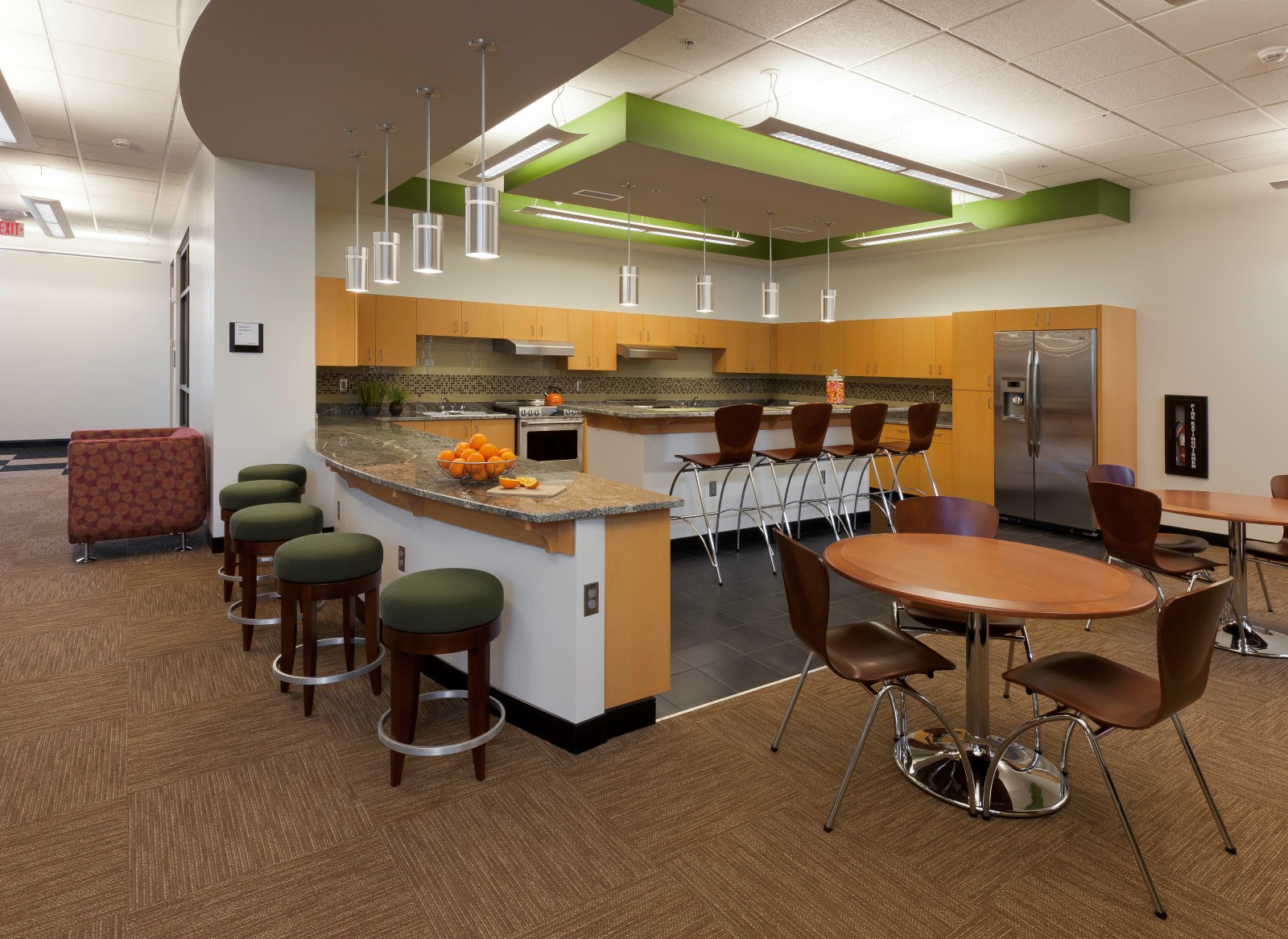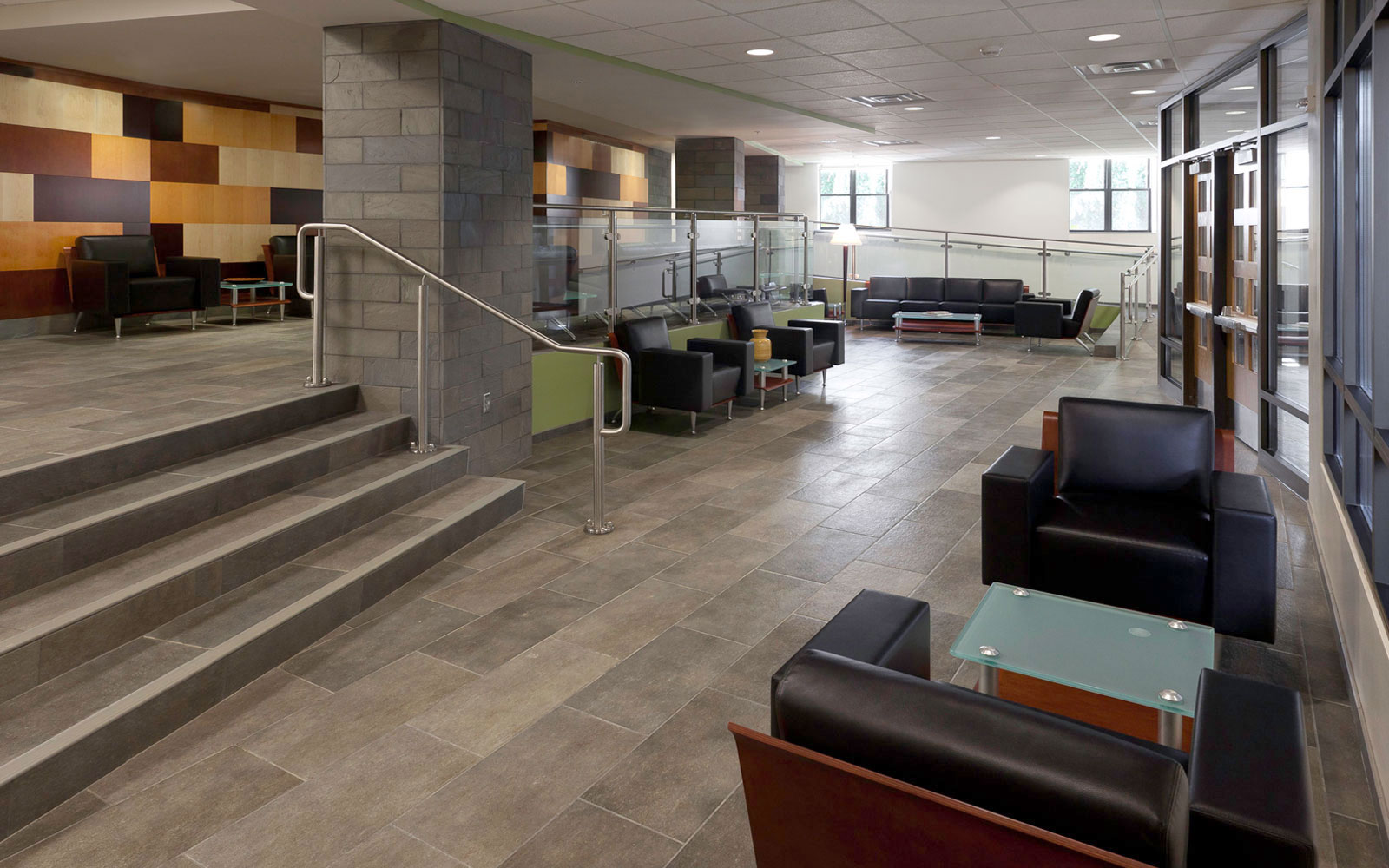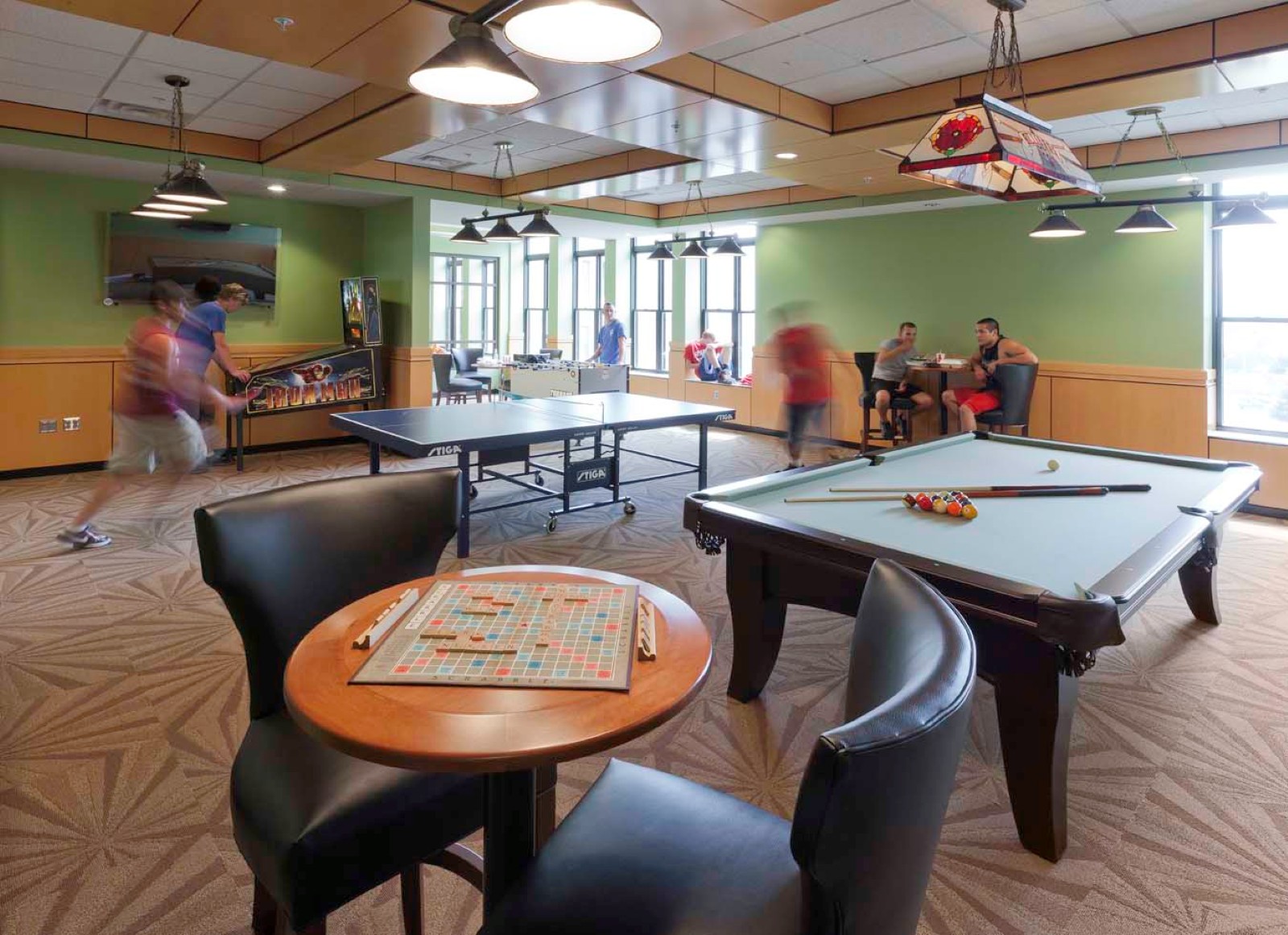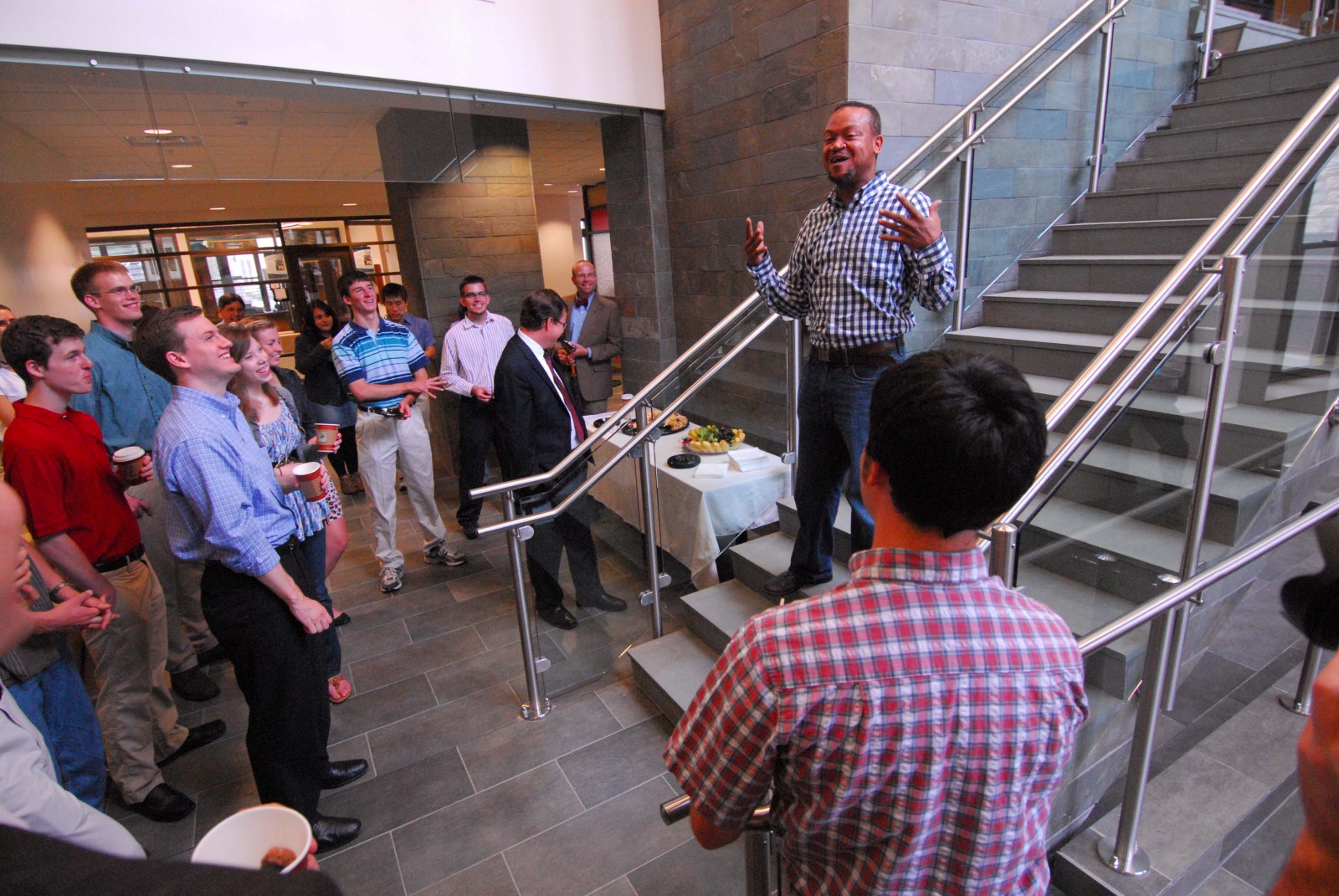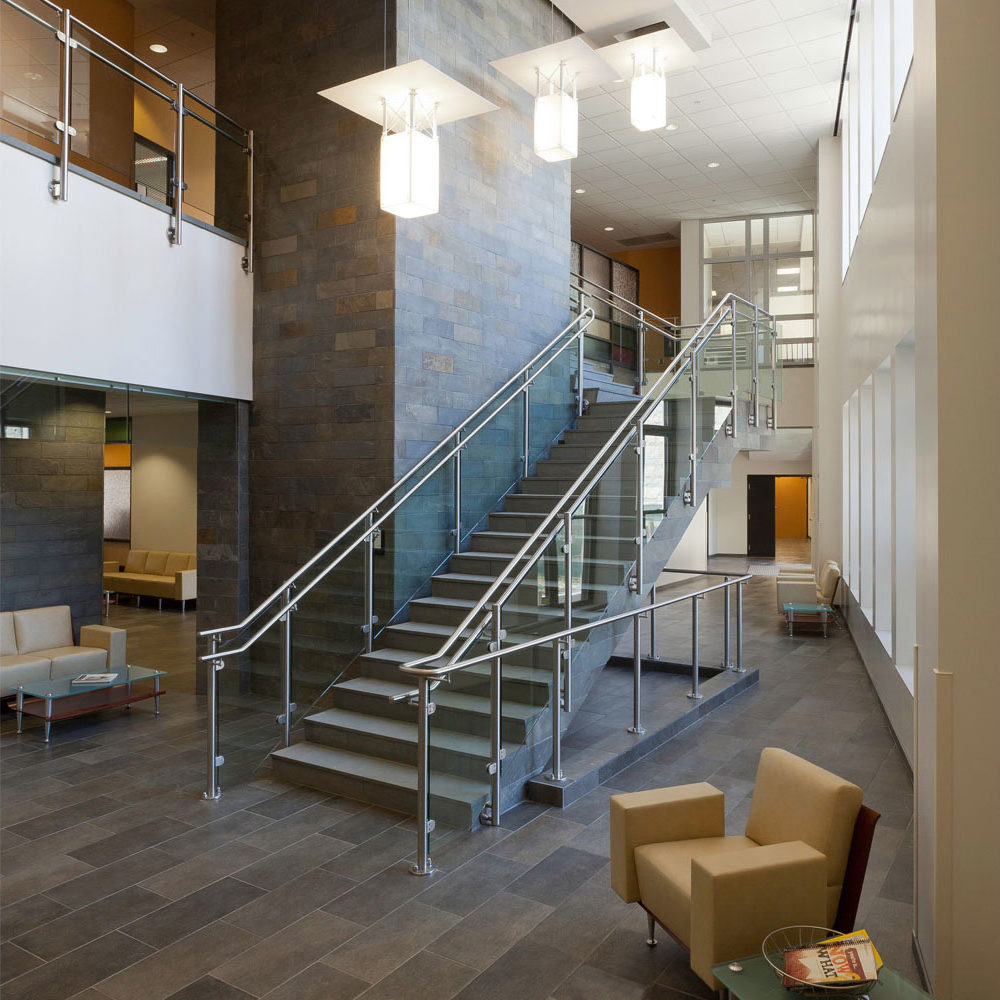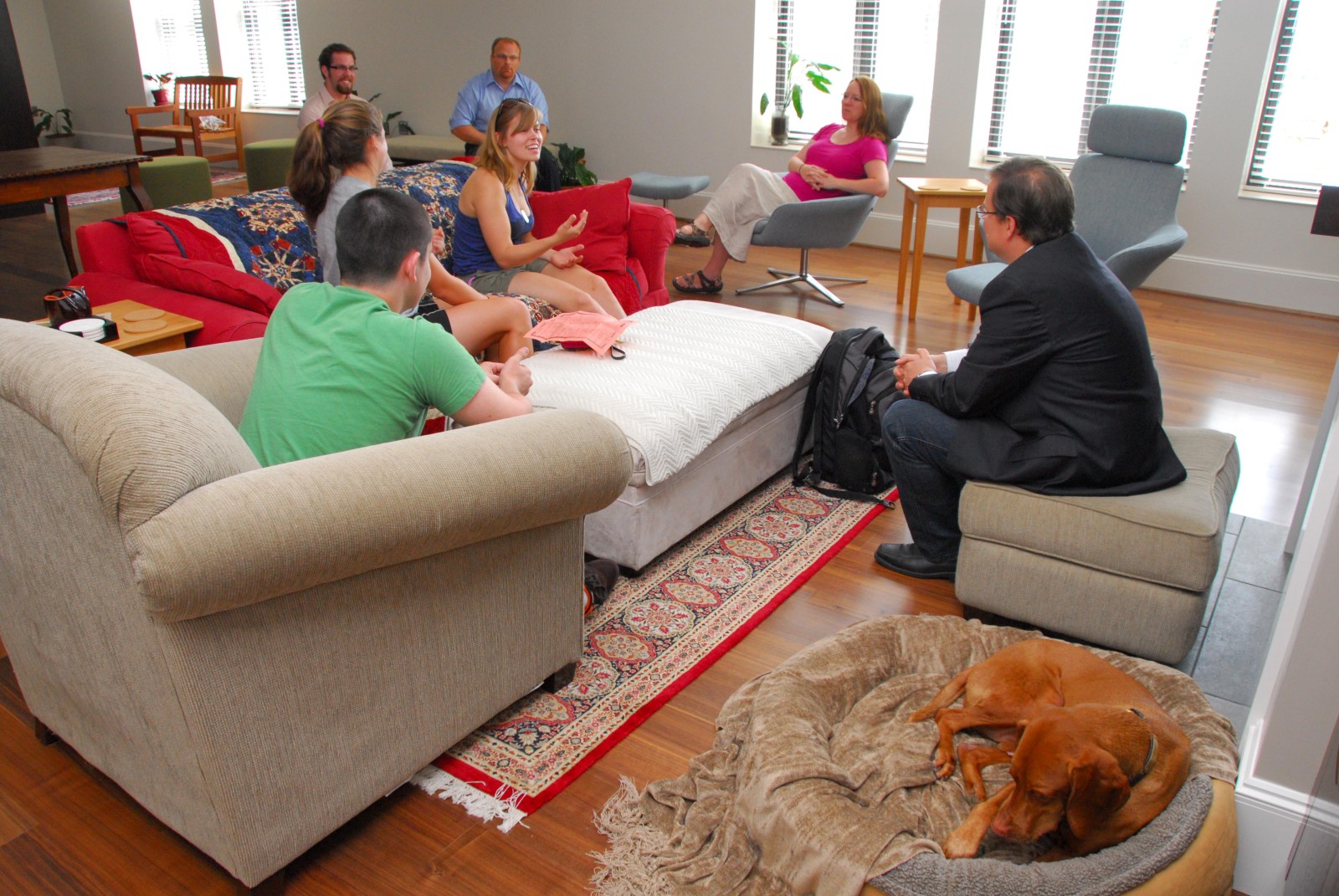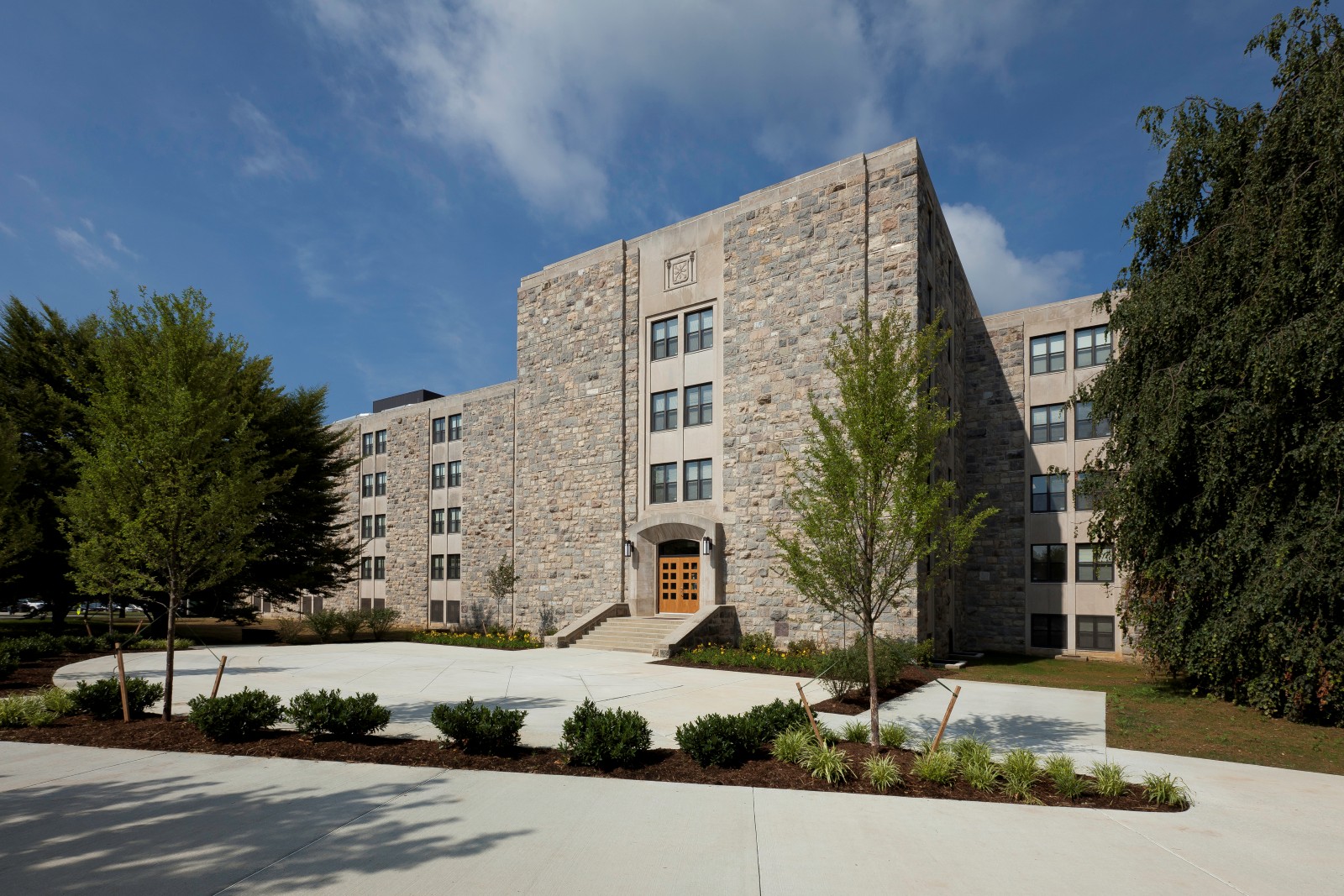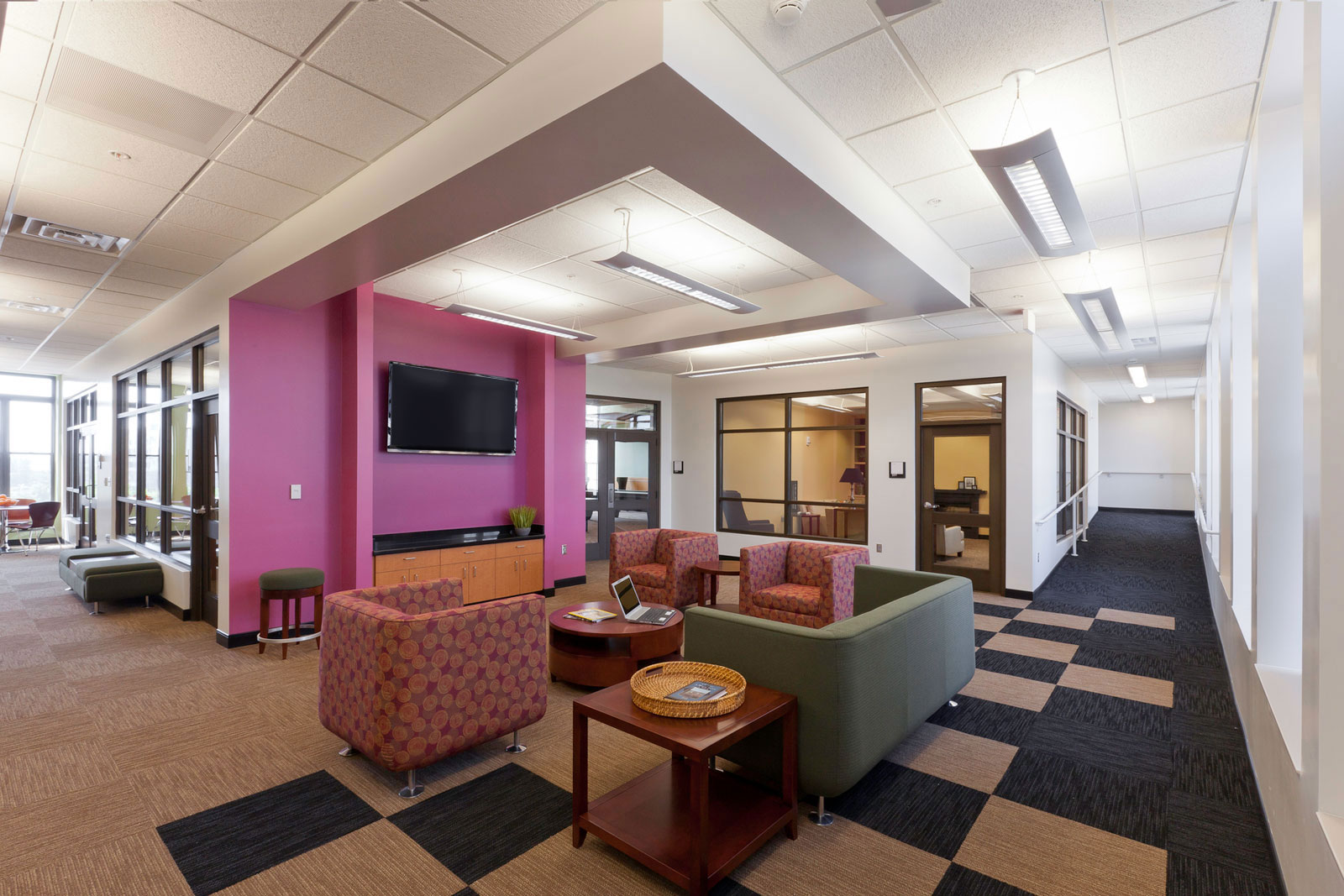Home to nearly 15% of Virginia Tech’s on-campus residents, Ambler Johnston Residence Hall plays a high profile role in the university’s student life as its largest residence hall. To transform this important, 1960’s building from a cold, dark shell into an engaging, vital place to live and learn, Virginia Tech partnered with Clark Nexsen on a comprehensive renovation that addressed function, aesthetics, ADA accessibility, and major systems – all components that impact the experiences of 1,200 student residents.
Today, the revitalized residence hall houses the university’s first-ever living-learning colleges, with new meeting rooms and multipurpose teaching labs overlooking the enlivened atrium and providing space for varied learning styles. The entire design was strategically developed to promote a sense of community and facilitate engaged learning through an inviting blend of common spaces that create opportunities for social and educational interaction.
The lobbies were reimagined to create a welcoming community space with a new central, two-story atrium. Complemented by bright colors and crisp, modern finishes, this open space concept is a stark and welcome contrast to the pre-renovation low ceilings and tight corridors. With accessibility improved through the addition of elevators and ramps, the long residential corridors were visually enhanced and given a sense of place through the addition of archways, which served the dual purpose of attractively concealing the routing of new building utilities.
Designed to appeal to today’s student and create a “community within a community,” each section of student rooms includes a living-room style commons room and suite-style bedrooms with private bathrooms. New residential apartments for faculty and graduate staff were also incorporated as part of the living-learning emphasis.
Featuring student amenities such as a multi-media theater, game room, community teaching kitchen, library, fitness center, and Honors Commons, Ambler Johnston provides ample opportunity for engagement between students and faculty as well as socialization and leisure time. In addition to transforming the building’s appearance and function, the renovation included the replacement and addition of building systems such as heating, air conditioning, ventilating, plumbing, fire protection, and electrical and telecommunications to support a comfortable environment with the technology today’s students demand.
The facility received LEED Gold certification from the U.S. Green Building Council.
Awards
American School & University Magazine Educational Interiors Showcase Gold Citation, 2013
Virginia ASID Contract Institutional First Place Award, 2013
Engineering News-Record Southeast Best Higher Education/Research Project Merit Award, 2012
